For preschoolers after the pandemic, more states say: Learn outdoors
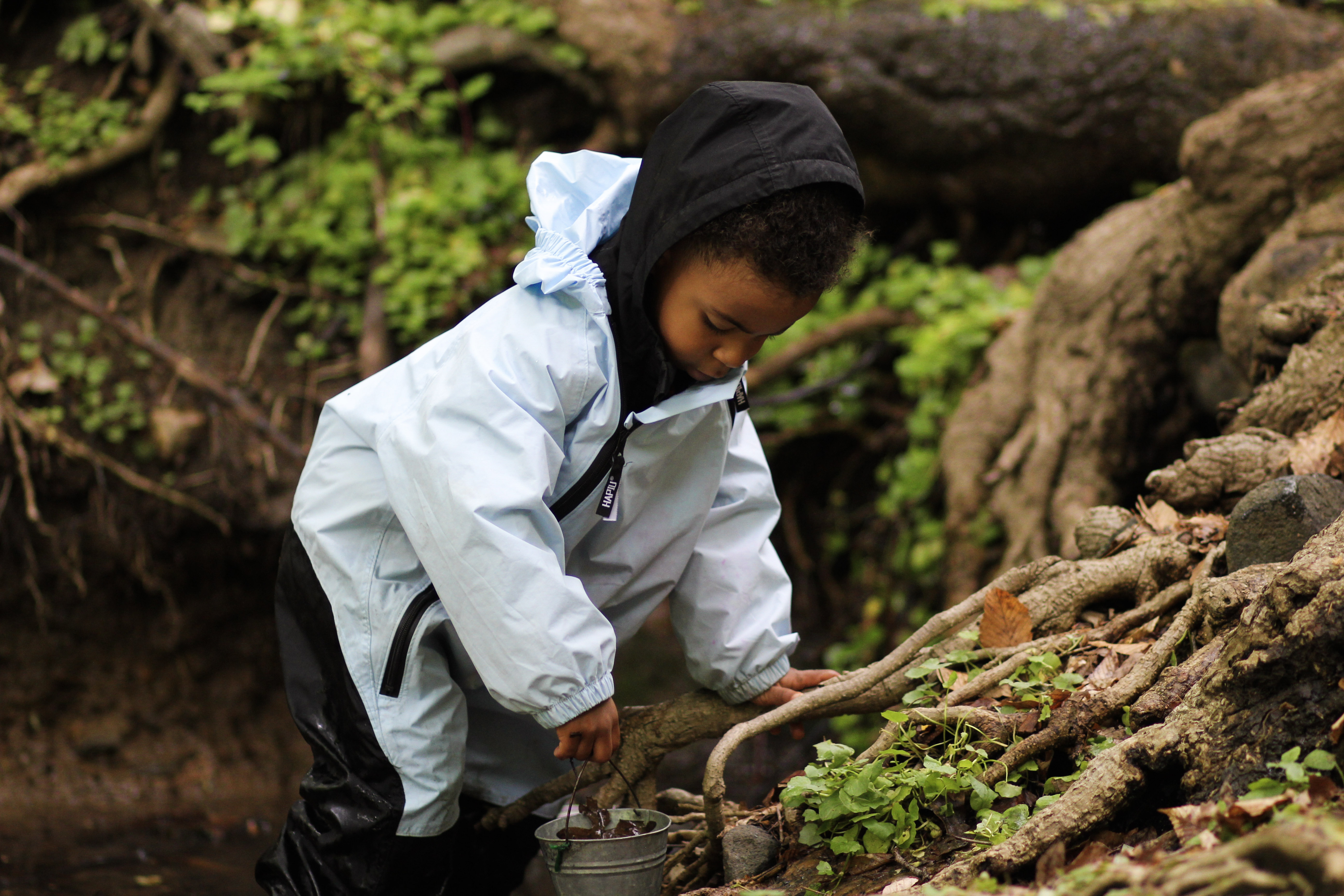
Jackie Mader/The Hechinger Report
For preschoolers after the pandemic, more states say: Learn outdoors
A young child in a rain suit and hood holding a small metal bucket bends over a stream near a gnarled bunch of tree roots.
BALTIMORE — On a chilly May morning in Leakin Park, preschoolers at the Carrie Murray Nature Center Forest Preschool fanned out across a small section of the woods. Bundled up in colorful rain suits, boots and mismatched gloves, some children used tin buckets to scoop water from a creek while others traipsed off with a teacher to examine a large log a few yards away. There, they discovered something huge, orange and “very sticky.”
“There’s a chicken of the woods up here if anyone would like to see it!” a teacher called out.
The rest of the preschoolers stopped what they were doing and clomped up a muddy path toward the discovery. They veered into the underbrush, warning one another to watch out for sticks and “deer scat.” The children already at the log wordlessly made room for their friends, and they all gazed in awe at two blossoming chicken of the woods mushrooms.
![]()
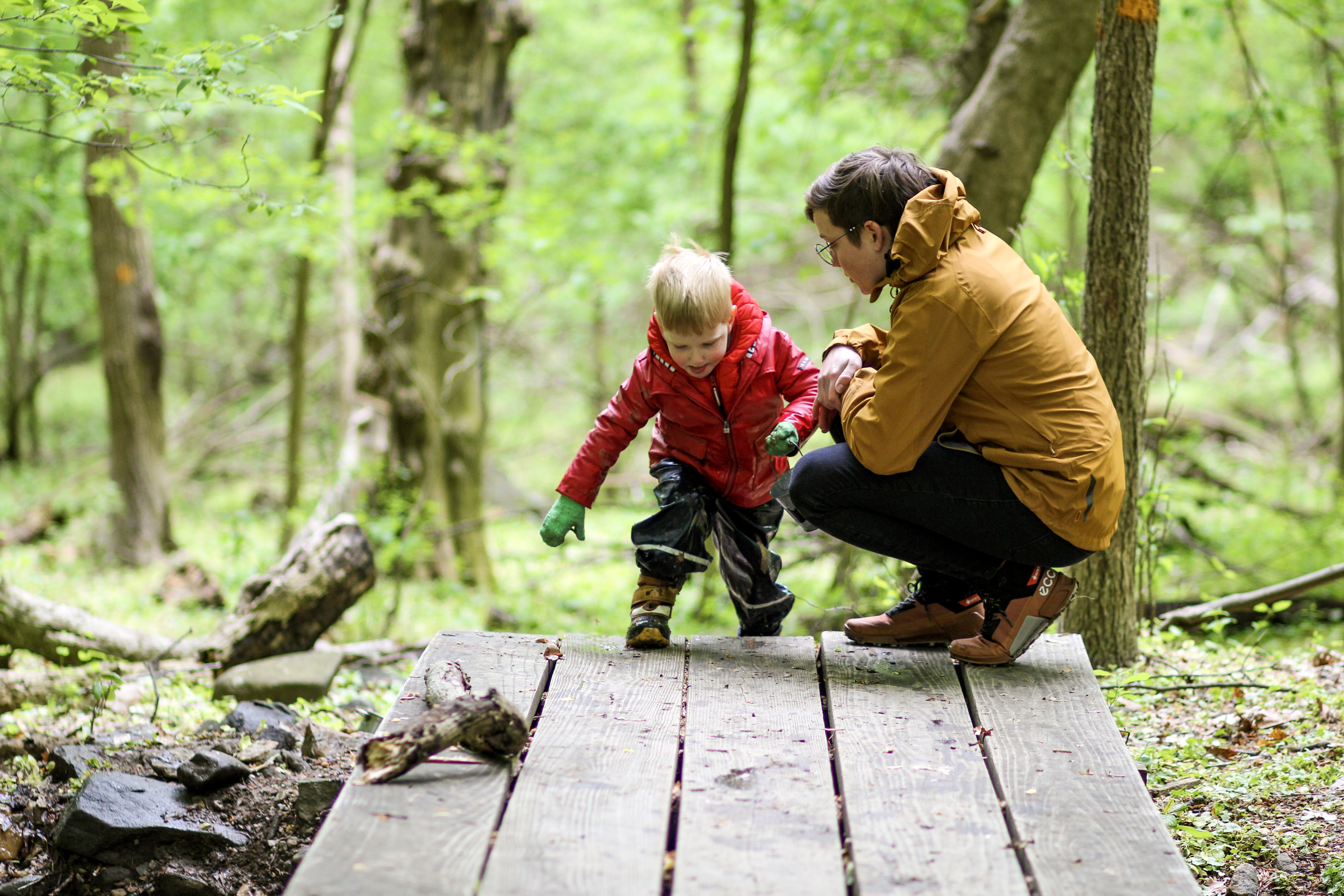
Jackie Mader/The Hechinger Report
Learning from nature
An adult helps a child step up onto a wooden platform
“I found a very old one once,” a child said.
“I see black stuff,” said another, crouching down to peer at specks on the mushroom.
“You can eat chicken of the woods but first you have to cook it,” offered a third, sternly.
This outdoor approach to teaching preschool is gaining momentum nationwide. Long common in such countries as Denmark, Sweden and Germany, nature preschools and kindergartens have exploded in popularity in America over the past few years, growing from 250 in 2017 to more than 800 in 2022, based on a forthcoming report from the nonprofit Natural Start Alliance. In the past five years, five states have introduced legislation or established pilot programs to support outdoor learning as an alternative to traditional preschool and child care programs.
Experts and advocates say the naturalist approach can be especially beneficial to children after the pandemic. In these preschools, children spend most or all of their time outside. The natural settings are generally calm and quiet, lead to lower levels of stress and foster traits like resilience, leadership, problem-solving and perseverance, research shows.
The Hechinger Report finds that outdoor preschools are generally inaccessible to children of color. Only 7 percent of students in these preschools are of Hispanic, Latino or Spanish origin, and only 3 percent are Black, according to a 2017 report. Those numbers haven’t budged, even as programs have proliferated.
As it stands, most states make it difficult — if not impossible — for outdoor early learning programs that lack physical buildings and other amenities, such as handwashing stations, to get licensed. So, they are run as mostly private, half-day programs — drawing in children from higher-income families, most of whom are white. The Carrie Murray Nature Center’s outdoor preschool in Baltimore is licensed and uses a park building for the times when children are napping, eating or need to use the bathroom. Program officials have advertised in local neighborhoods to try to improve diversity, but recruiting a diverse population is a challenge.
Unlicensed outdoor preschools are ineligible to accept state subsidies for low-income families, said Monica Wiedel-Lubinski, executive director of the Eastern Region Association of Forest and Nature Schools. “It just perpetuates that barrier for the most vulnerable kids and most vulnerable communities.”
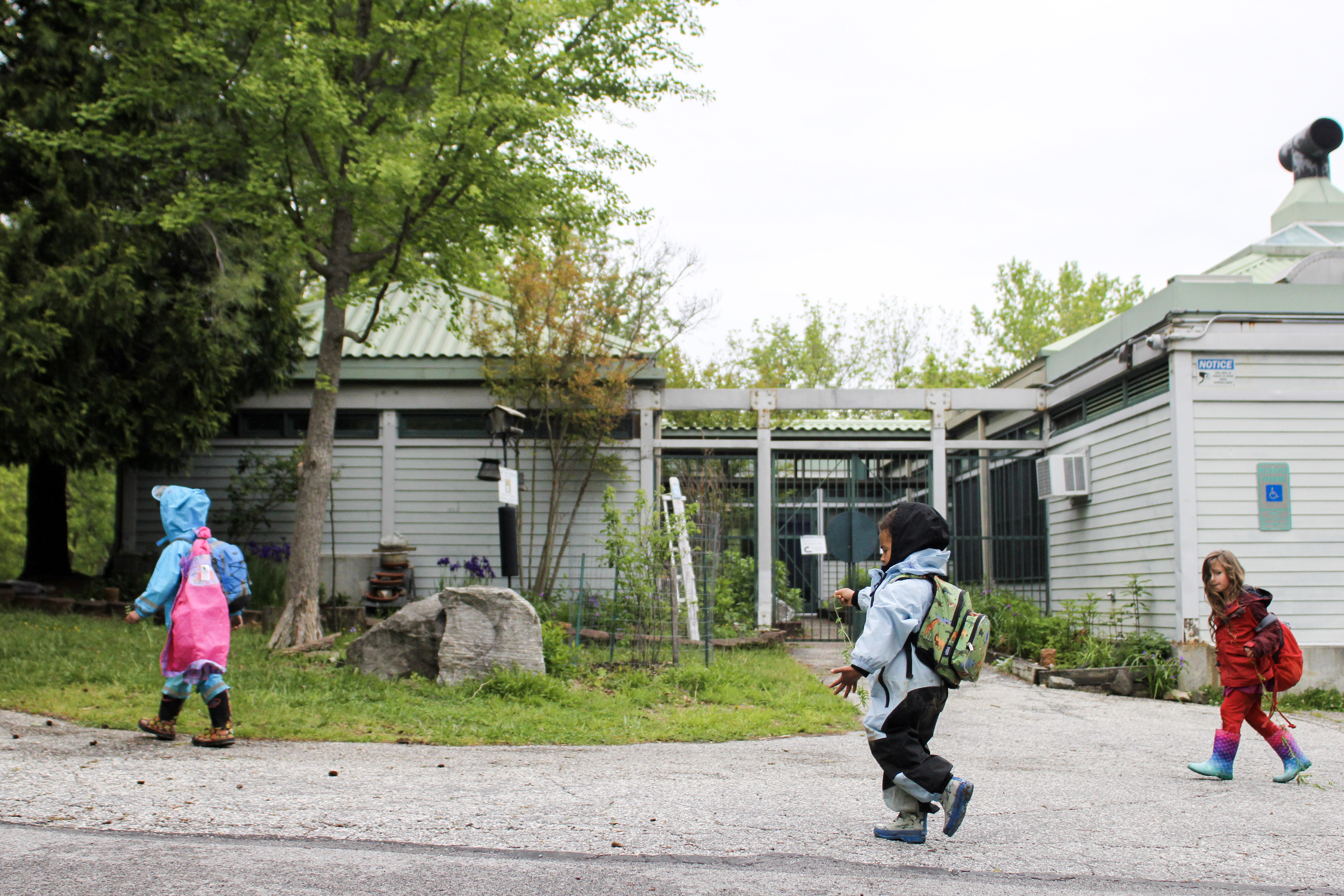
Jackie Mader/The Hechinger Report
Learning and experiencing through play
Children in jackets and carrying backpacks walk down a sidewalk.
The handful of states that are embracing outdoor education by adjusting licensing requirements are doing so in part to expand access.
In Maryland, legislation passed last month would create state licensing standards. The bill, which was sent to Democratic Gov. Wes Moore in April, would also establish a pilot program to test outdoor preschool standards with a few new programs and track efforts to expand the play-based outdoor model. If the pilot is successful, it will set the stage for an expansion of such preschools, which could chip away at persistent child care shortages. Outdoor preschools, once licensed, will be able to participate in the state’s child care quality program and enroll families that pay with state subsidies.
While pandemic-related health concerns may have spurred the recent growth of outdoor preschools, the hands-on approach of these programs is backed by a growing body of research on the importance of play for children’s learning and emotional well-being. Moreover, spending time in nature can benefit young children: Research shows it can improve academic performance, reduce symptoms of attention-deficit hyperactivity disorder, or ADHD, improve mental health and promote physical activity and the development of motor skills, among other things.
It may look like children at the Carrie Murray Nature Center Forest Preschool are simply playing for hours each day, but teachers say they are developing valuable skills. They are practicing leadership when they help less-experienced classmates navigate the terrain. They learn how to work together when they collaborate to build a waterfall or miniature mudslide. And they develop empathy when they check on friends who have slipped in the mud.
“I see these kids thriving,” said Monica French, director of the Forest Preschool, which is run by Baltimore City Recreation and Parks. “When they are little, we let them play and respect the fact that they are learning through play.”
Some research shows that students in outdoor programs are just as academically ready for elementary school as their peers from more traditional schools. And kids who learn outside may receive some advantages. A report on Washington state’s outdoor preschool pilot found children in one program experienced fewer incidents of challenging behavior when they attended preschool outdoors, and the prevalence of childhood obesity was reduced for children in another program.
French said she sees these benefits daily at the Forest Preschool in Baltimore. On a recent drizzly morning, she perched above a creek as several preschoolers stood in a chocolate-brown puddle.
“It’s 9 inches deep!” announced Bash, a 4-year-old with curly blond hair who was wearing a red and gray rain suit, or a “muddy buddy,” as it’s called in the outdoor preschool world.
As the rest of the group wandered off, Bash dropped her ruler in the water and gasped when it stayed afloat. A friend descended the muddy hill to the creek and splashed into the water.
“Can I try?” he asked.
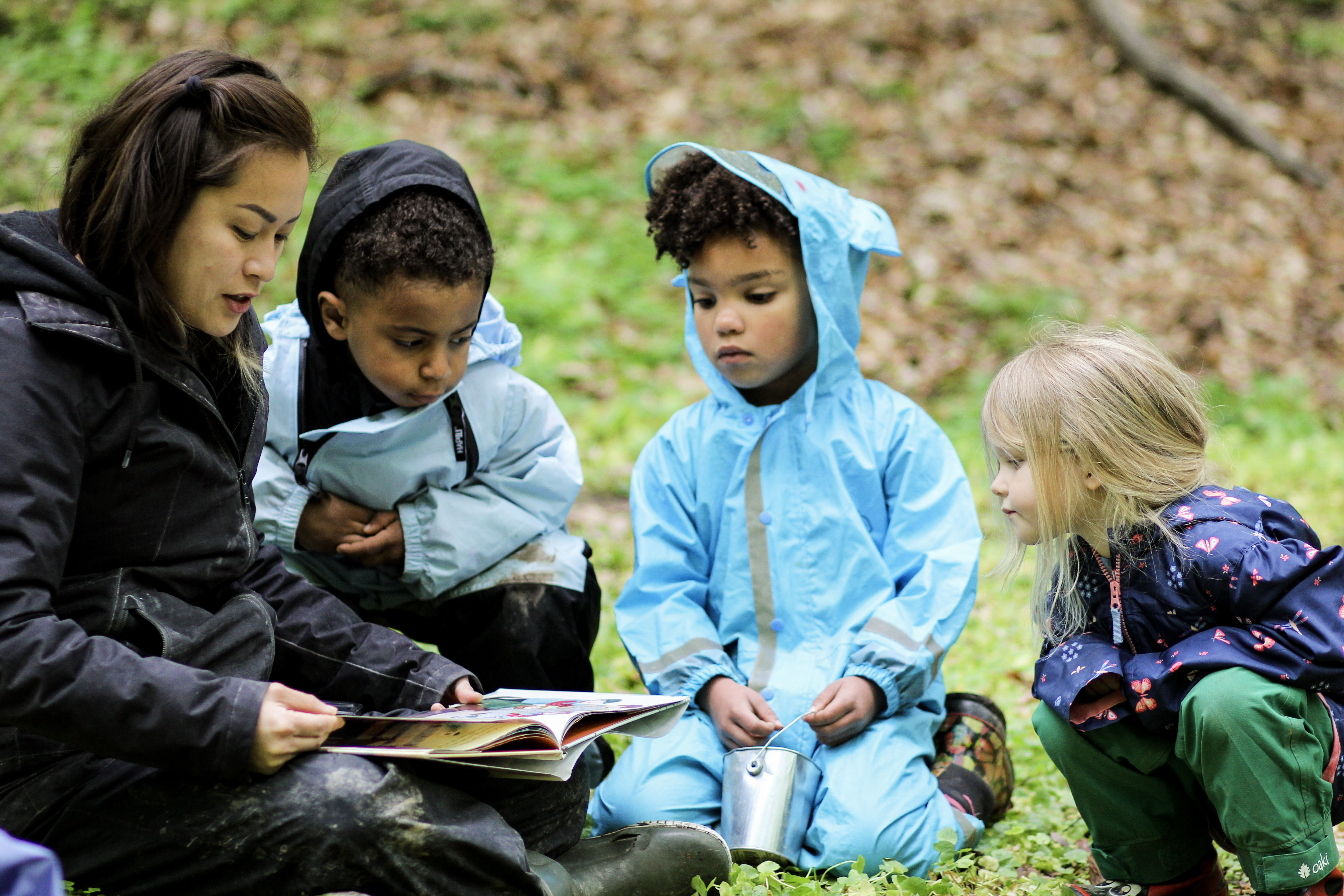
Jackie Mader/The Hechinger Report
Outdoor learning can prepare children for elementary school
An adult sits with three children outside, holding a book and showing the children the pages.
“I see these kids thriving,” said Monica French, director of the Forest Preschool, which is run by Baltimore City Recreation and Parks.
“When they are little, we let them play and respect the fact that they are learning through play.”
Some research shows that students in outdoor programs are just as academically ready for elementary school as their peers from more traditional schools. And kids who learn outside may receive some advantages. A report on Washington state’s outdoor preschool pilot found children in one program experienced fewer incidents of challenging behavior when they attended preschool outdoors, and the prevalence of childhood obesity was reduced for children in another program.
French said she sees these benefits daily at the Forest Preschool in Baltimore. On a recent drizzly morning, she perched above a creek as several preschoolers stood in a chocolate-brown puddle.
“It’s 9 inches deep!” announced Bash, a 4-year-old with curly blond hair who was wearing a red and gray rain suit, or a “muddy buddy,” as it’s called in the outdoor preschool world.
As the rest of the group wandered off, Bash dropped her ruler in the water and gasped when it stayed afloat. A friend descended the muddy hill to the creek and splashed into the water.
“Can I try?” he asked.
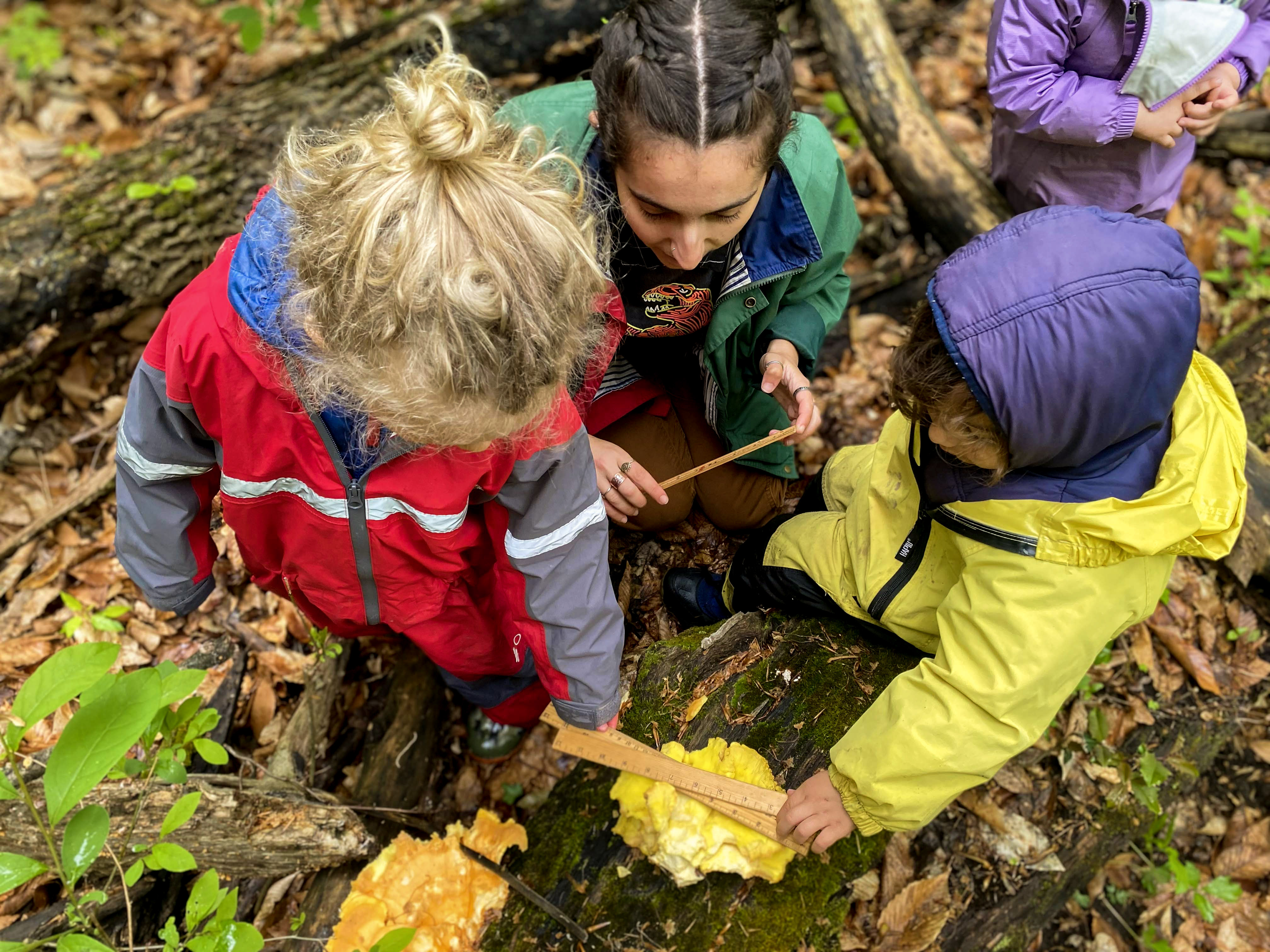
Jackie Mader/The Hechinger Report
New regulations could set a new standard for outdoor programs
Two children with a teacher hold rulers over a chicken of the woods mushroom on a fallen tree trunk.
Bash nodded and handed him a plastic ruler.
He dropped it in the water, then fished it out and examined it.
“These ones are inches, and those ones are centimeters,” Bash said, pointing to the sides of the ruler.
The two crouched down and called out measurements as they inched their way through the water.
French said her biggest fear when children leave the Forest Preschool for kindergarten “isn’t that they won’t have their writing skills, but that they’re going to go sit behind a desk all day long.”
While Maryland’s legislation will provide a significant boost for outdoor programs, considerable challenges remain. The bill gives priority for participation in the pilot to programs that are currently licensed as summer camps, child care programs or registered family child care homes enrolled in the state’s quality rating system. But it doesn’t offer extra funding to help new preschools get off the ground.
In northeast Baltimore, officials with Backyard Basecamp, an organization that focuses on expanding access to nature among communities of color, hope their organization will be among the pilot programs testing out the new regulations. While the nonprofit runs a nature-based summer camp, past efforts to launch an outdoor preschool at the organization’s 10-acre green space have been stymied, mostly by funding and staffing shortages. The program is currently working on training naturalists of color who can then become teachers to “reflect the people we are serving,” said Tatiana Mason, program director at Backyard Basecamp.
Mason added that outdoor preschools are expensive to run. “There’s a lot of gear, land is really expensive, and to have a place that is accessible and nature-based is very few and far between,” she said. While the pilot program could greenlight an outdoor preschool at Backyard Basecamp, there are other challenges, including stereotypes or fears around nature-based learning. “People think nature’s not for them, it’s not safe. That’s why it’s important to me to get people, especially children, a connection with nature starting early,” Mason said.
As Maryland works to formalize outdoor preschools, the state’s two dozen existing nature-based early learning programs are watching to see how officials handle licensing. “The whole licensing system is really built upon a framework where learning happens indoors and the outdoors is a break area,” said Christy Merrick, director of the Natural Start Alliance, which supports nature and outdoor learning programs.
The state will have to consider everything from rules for diaper changing to staff-to-child ratios and proper clothing for children. Maryland’s officials could look to Washington, where outdoor preschool licensing standards require a staff-to-child ratio and group size smaller than that of center-based early learning programs to make sure there is “appropriate” supervision of children while outdoors. Providers must also devise a risk management plan for nature-based activities like encountering wildlife. Teachers need not only the standard credentials but also experience or training in environmental or outdoor education. Children must wear proper clothing and have a safe building available for emergencies.
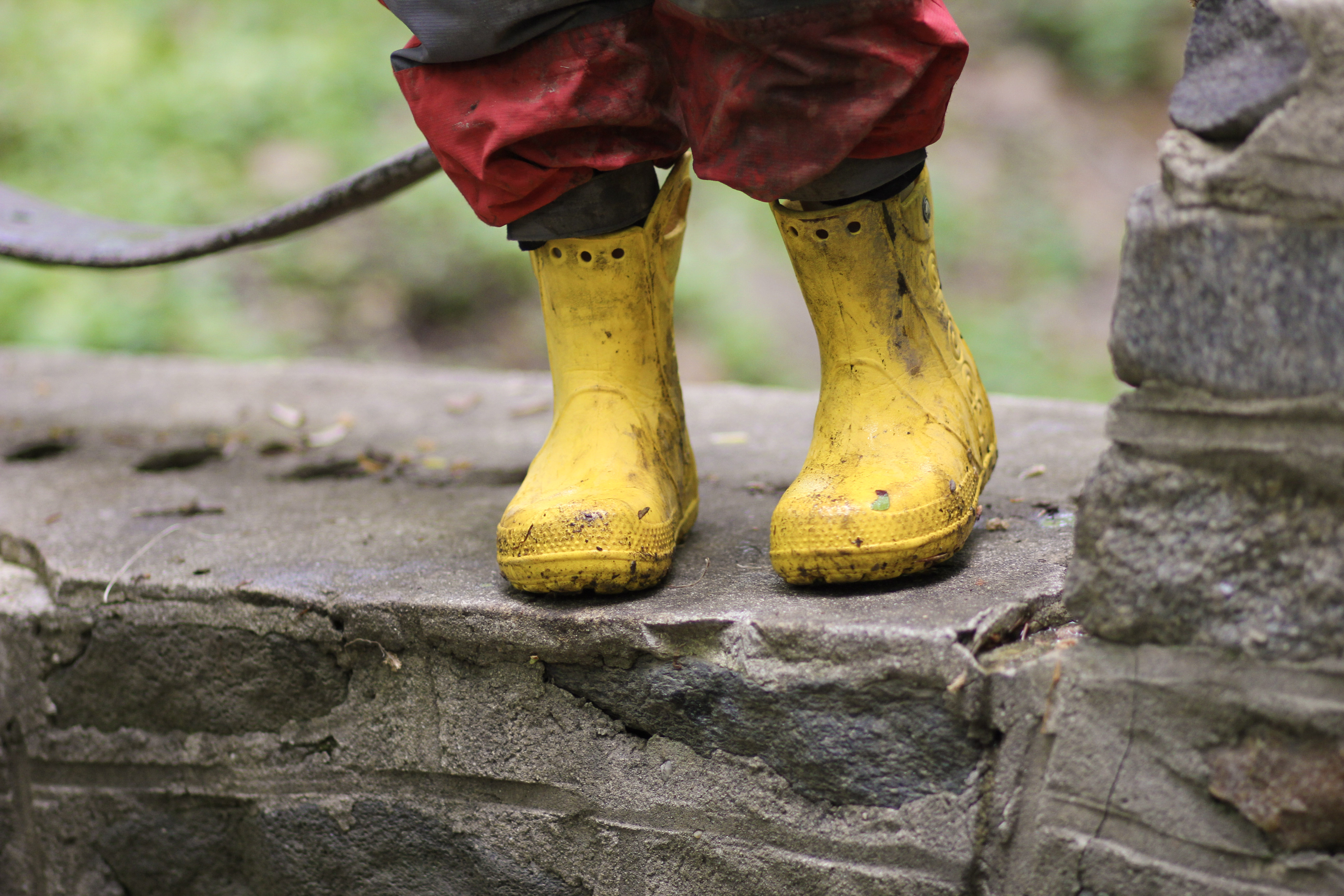
Jackie Mader/The Hechinger Report
A lesson in life cycles
A child’s feet in yellow rain boots.
Children could reap the benefits of an increase in the number of licensed nature schools, supporters say.
Ilina Chaudhuri, the parent of a child at the Carrie Murray Nature Center Forest Preschool, was originally skeptical that preschool could work outdoors, especially in a large public park like Leakin. But after seeing the impact on her son, she has become a believer.
Before enrolling, she said, “I wondered, ‘Is my child going to be one of these hippy-dippy, tree-hugging kids and doesn’t have any of those academic skills?'”
Now, Chaudhuri said her 4-year-old, Ravi, has developed early academic skills, including letter recognition, writing his name and counting. He has also become better at regulating his behavior and emotions. He’s more patient and able to resolve conflict, which she attributes to the peaceful environment where he spends his days.
Recently, when their family’s dog died, Ravi was remarkably calm. “He was already familiar with this idea [of death] from what he’s observed every day,” in nature, Chaudhuri said, incredulous. “He knew there’s a life cycle. He used the word, ‘decomposition.'”
This story was produced by the Hechinger Report and reviewed and distributed by Stacker Media.